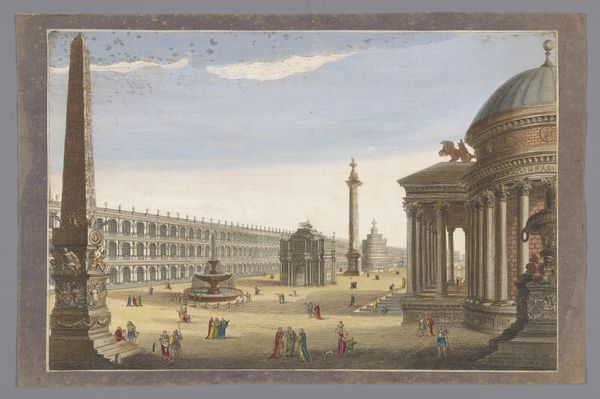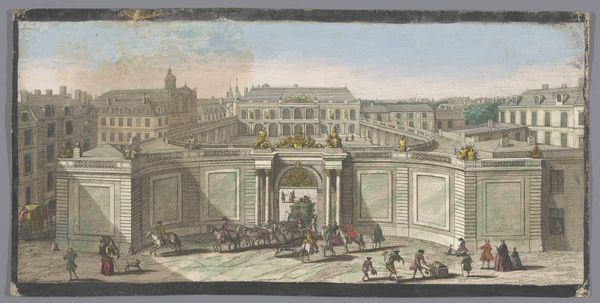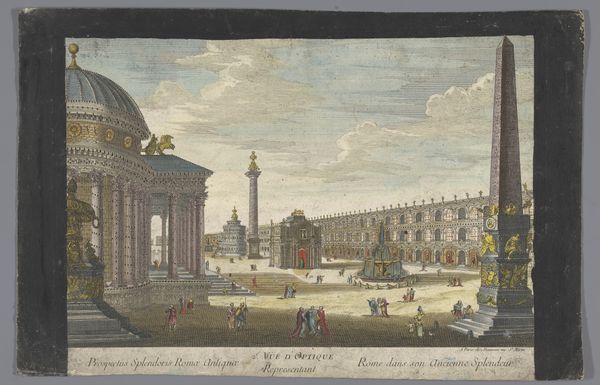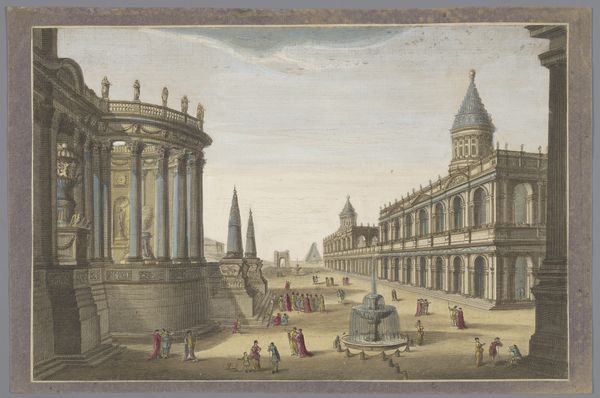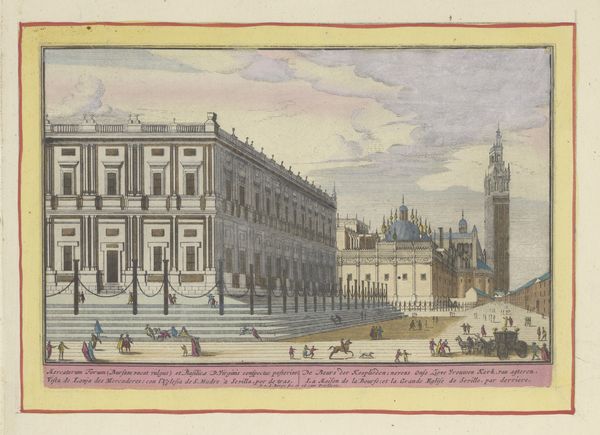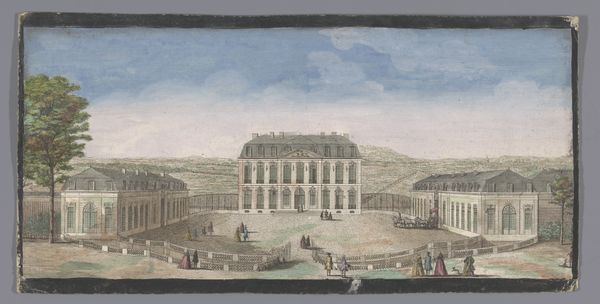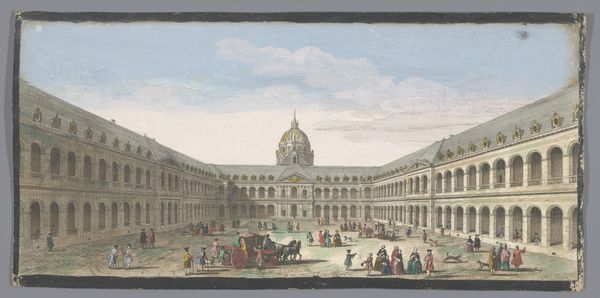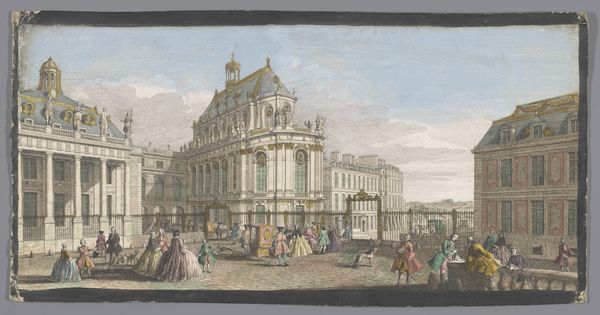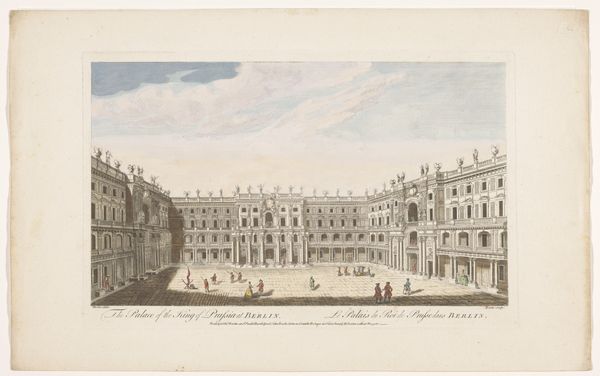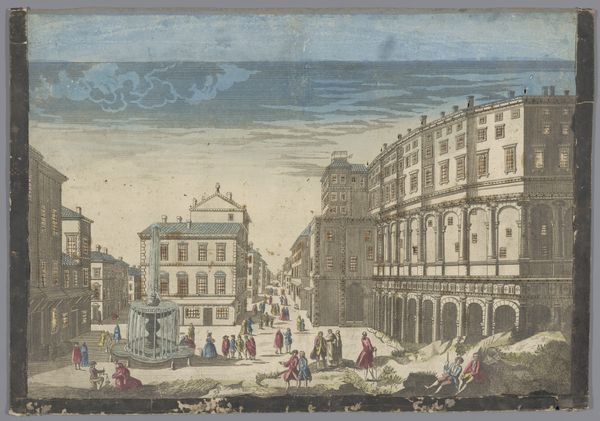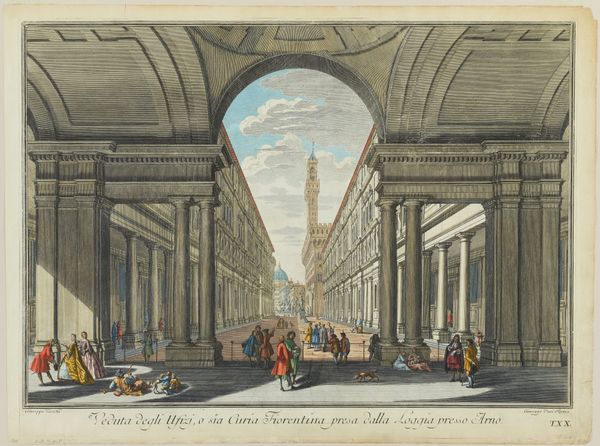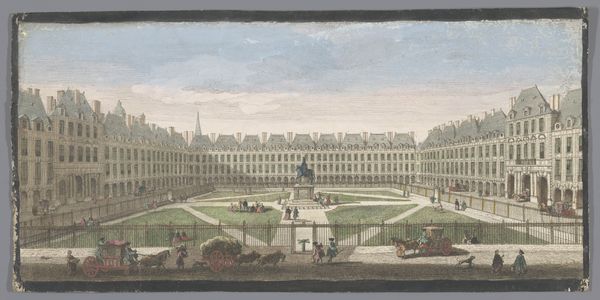
Gezicht op een obelisk, een triomfboog, een zuil en andere bouwwerken te Rome 1756
0:00
0:00
robertsayer
Rijksmuseum
drawing, print, etching, watercolor
#
drawing
#
neoclacissism
#
water colours
# print
#
etching
#
landscape
#
watercolor
#
coloured pencil
#
cityscape
Dimensions: height 273 mm, width 401 mm
Copyright: Rijks Museum: Open Domain
Curator: This drawing from 1756 by Robert Sayer presents us with "View of an Obelisk, a Triumphal Arch, a Column and Other Buildings in Rome." It's a combination of etching, printmaking, and watercolor on paper. Quite striking, wouldn't you agree? Editor: My first impression is of rigid order, yet the subtle washes of color bring an unexpected serenity. The artist's control of line is meticulous. How are we to interpret the symbolic elements here? Curator: Well, the scene is dominated by these carefully rendered classical structures. Look at the obelisk, the triumphal arch, the meticulously lined colonnades; each contributes to a visual vocabulary steeped in power, history, and imperial ambition. It almost seems an ideological statement. Editor: Indeed. The obelisk, for example, reaching towards the sky, has been a symbol of divine power since ancient Egypt, adopted by Rome as a sign of conquest and rule. And observe how the eye is led through this panorama, carefully directed by architectural markers laden with meaning. What cultural memories would this composition trigger? Curator: This piece echoes a deep-seated longing to reclaim classical ideals, very prominent within the Neoclassical movement. It is almost as if the layout dictates social order, the tiny figures merely adhering to the grandeur of the built environment. Observe how these elements contribute to a powerful spatial dynamic. Editor: You are correct. It reflects the 18th century's fascination with the glories of antiquity but does the calculated order suppress the spontaneity of life itself? I wonder what message is delivered by its rather formal arrangement of symbolic constructions. It's more than just picturesque topography. Curator: Perhaps the artist intended it to convey humanity’s capacity for reason and order, expressed through geometric balance, vertical and horizontal interplay, and subtle color gradients. A civilizing influence made visible through formal composition. Editor: Undoubtedly! Yet, even within this meticulously ordered vista, I sense the weight of history, a reminder that even the most enduring symbols are susceptible to cultural shift and reinterpretation. Curator: I would suggest this landscape presents a powerful meditation on how architectural forms shape social and psychological experiences. Editor: Quite insightful! It reveals how even seemingly neutral artistic composition contains narratives that continue to invite diverse cultural viewpoints.
Comments
No comments
Be the first to comment and join the conversation on the ultimate creative platform.
